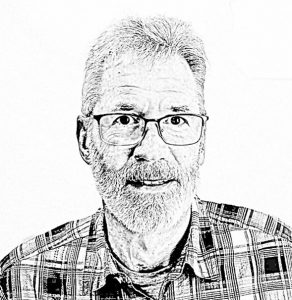My wife and I recently returned to Greenville from an overseas trip to the Middle East. Between two airplane flights and two bus rides, the total travel time from Jerusalem to Greenville was about 24 hours. On the flight from Tel Aviv to New York, all 5016 miles took about 12 hours. Interestingly, when we flew from New York to Tel Aviv, the same 5016 miles was a 10-hour flight. Having the wind at your back (the jet stream) makes all the difference. Obviously, in either case, flying in an airplane covered miles faster than travel on a bus. Aircraft are designed for flight and cover a lot of ground quickly and efficiently.
Consider your business. How is it designed? Is it designed to fly like an airplane? Wouldn’t it be great if you could always fly with the wind at your back? Unfortunately, we are all going to face a headwind at times in our careers. In fact, sometimes those headwinds can make you feel like you aren’t making progress at all. Let’s consider some of those headwinds and how we can overcome them.
Business systems and processes that are cumbersome and difficult to operate. An airplane shape is designed to reduce drag. Although headwinds still create resistance to forward motion, the efficient aerodynamic design reduces the drag and facilitates forward movement. Some might consider business processes and tools to be a drag. However, when designed correctly, business processes will increase chances for successful outcomes and improve quality. Create good processes, continuously reassess, and streamline them for efficiency.
Customers that drive requirements that alter your efficient business model. If you have been successful in business for very long, clearly you have developed business processes and work procedures that work to your competitive advantage. Occasionally, a customer might insist your company change processes to match the customer’s internal structures. For example, at KTM Solutions, we are often asked to generate drawings and reports to match our customer’s internal standards. Although this is very doable, these requests disrupt processes and can result in inefficiencies. Sometimes a customer will relent and accept our standards when they understand that the end product meets their technical requirements for a better price. But, when the customer is unwilling, we try to tailor our best practice to fit the customer’s needs and operate as efficiently as possible.
Customers and suppliers with financial and delivery issues. If you have been in business any length of time, you are bound to experience the turbulence of slow-paying or non-paying customers. On the other side, you may also experience the slow-to-respond or late-to-deliver supplier. Both of these conditions can result in a balagan. Nothing disrupts a business more than cash-flow issues. Having financial reserves inside your business can help smooth the turbulence. Requiring payment up front while customers earn credit might also be the trick to staying in smooth air and reducing headwind. As for late-delivering suppliers, finding partners you can trust and building a relationship of shared success can be the ticket. Hold on to those relationships and protect them. More often than not, those relationships can create a great tailwind to help you overcome the strong headwinds.
Too much growth too quickly. Many people starting out in business are eager for rapid growth. When an airplane takes off, huge volumes of fuel are consumed. Airframe stresses are also high. Steady and level flight is where the aircraft is most efficient. When a company is in growth mode, a large volume of resources is consumed and simultaneously the basic business infrastructure is tested. Growing too quickly can cause a catastrophic failure of business processes and work procedures. Not to mention, rapid growth does not allow for disciplined development of your most important resources, your staff.
An unprepared and under-equipped workforce. The most important thing you can do to reduce headwinds and improve chances for a smooth flight is to develop and equip your staff. This takes time and patience. Hiring the right people, people who are teachable and eager to learn, should be a top consideration. Give your employees the training they need, consistent processes and procedures, and the proper tools so they can be most efficient in their jobs. Also allow your employees to learn. Recognize that the learning process includes mistakes. Ensure that your processes are established to catch mistakes before they make it to your customer. Build an environment that celebrates learning rather than punishes employees for mistakes. When fear of failure is removed from the workforce and your employees are properly equipped, your organization will begin to soar!
There is a great deal more that could be said about all these headwinds, including strategies for overcoming them. However, I think the last idea presented—developing and equipping your workforce, including the provision for experimenting, failing, and learning—will be the reader’s best pathway to success. If this article does little more than to get the reader to accept the reality of headwinds and begin to think of ways to overcome some of the most basic problems, this article has accomplished its intent. Now go out there, build your flight plan and fly efficiently to your target!
–
 Paul V. Kumler, P.E., is president and founder of KTM Solutions, an engineering company that services the aerospace and large-scale manufacturing industries. KTM Solutions designs and builds custom machines and “tooling” (jigs, fixtures, below-the-hook lifting systems) supporting a broad clientele and various industries. (www.ktmsolutions.com) The company is headquartered in Greer, South Carolina, with a remote office in Charleston, South Carolina. Mr. Kumler serves in several volunteer roles including the SC Aerospace Advisory Board. Mr. Kumler, a professional engineer, is licensed in Louisiana, South Carolina, Texas, and Washington. He is married to Ginger A. Kumler. Together, they have two grown children and three grandchildren.
Paul V. Kumler, P.E., is president and founder of KTM Solutions, an engineering company that services the aerospace and large-scale manufacturing industries. KTM Solutions designs and builds custom machines and “tooling” (jigs, fixtures, below-the-hook lifting systems) supporting a broad clientele and various industries. (www.ktmsolutions.com) The company is headquartered in Greer, South Carolina, with a remote office in Charleston, South Carolina. Mr. Kumler serves in several volunteer roles including the SC Aerospace Advisory Board. Mr. Kumler, a professional engineer, is licensed in Louisiana, South Carolina, Texas, and Washington. He is married to Ginger A. Kumler. Together, they have two grown children and three grandchildren.


Be the first to comment on "Learning to Fly Efficiently"